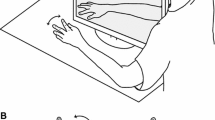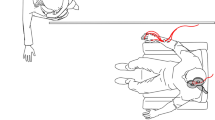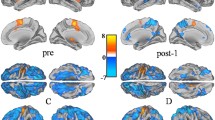Mirror neuron research has come a long way from their discovery in primates to modern experiments in humans. However, many methodological questions remain regarding the method and timing of stimulus presentation in such studies. What is the optimal way to present motor stimuli? Is it possible to evaluate the temporal dynamics of the mirror neuron effect using transcranial magnetic stimulation at defined time points? The study reported here examined different types of stimulus presentation (photos and videos of hand movements) combined with single-pulse transcranial magnetic stimulation (TMS) of the primary motor cortex (M1) of the dominant hemisphere in different time windows (0, 320, 640 msec). Motor evoked potentials (MEP) were recorded from the first dorsal interosseous (FDI) and the abductor digiti minimi (ADM) muscles using adhesive electrodes placed on the hand muscles in 11 healthy subjects at rest with the hands positioned orthogonally during observation of visual stimuli in three different presentation conditions. The study results showed that video stimuli produced the strongest mirror effect when the TMS stimulus was presented 320 msec after presentation of the movement. This effect was specific to particular muscles. The data obtained here will help to formulate an optimal protocol for studying the mirror neuron system in humans and will contribute to its further clinical use in investigations and rehabilitation.
Similar content being viewed by others
References
Barchiesi, G. and Cattaneo, L., “Early and late motor responses to action observation,” Soc. Cogn. Affect. Neurosci., 8, No. 6, 711–719 (2013).
Barker, A. T., Freeston, I. L., Jalinous, R., and Jarratt, J. A., “Magnetic stimulation of the human brain and peripheral nervous system: an introduction and the results of an initial clinical evaluation,” Neurosurgery, 20, No. 1, 100–109 (1987), https://doi.org/https://doi.org/10.1097/00006123-198701000-00024.
Bianco, G., Feurra, M., Fadiga L, et al., “Bi-hemispheric effects on corticospinal excitability induced by repeated sessions of imagery versus observation of actions,” Restor. Neurol. Neurosci., 30, 481–9 (2012), https://doi.org/https://doi.org/10.3233/RNN-2012-120241.
Brighina, F., La Bua, V., Oliveri, M., et al., “Magnetic stimulation study during observation of motor tasks,” J. Neurosci., 174, 122–126 (2000).
Catmur, C., Mars, R. B., Rushworth, M. F., and Heyes, C., “Making mirrors: premotor cortex stimulation enhances mirror and counter-mirror motor facilitation,” J. Cogn. Neurosci., 23, No. 9, 2352–2362 (2011).
Catmur, C., Walsh, V., and Heyes, C., “Sensorimotor learning configures the human mirror system,” Curr. Biol., 17, 1527–31 (2007), https://doi.org/https://doi.org/10.1016/j.cub.2007.08.006.
Colomer, C., Noé, E., and Lorens Rodríguez, R., “Mirror therapy in chronic stroke survivors with severely impaired upper limb function: a randomized controlled trial,” Eur. J. Phys. Rehabil. Med., 52, No. 3, 271–278 (2016).
Dechent, P. and Frahm, J., “Functional somatotopy of finger representations in human primary motor cortex,” Hum. Brain Mapp., 18, No. 4, 272–283 (2003).
Di Pellegrino, G., Fadiga, L., Fogassi, L., et al., “Understanding motor events: a neurophysiological study,” Exp. Brain Res., 91, No. 1, 176–180 (1992).
Errante, A. and Fogassi, L., “Activation of cerebellum and basal ganglia during the observation and execution of manipulative actions,” Sci. Rep., 10, No. 1, 1–15 (2020).
Fadiga, L., Craighero, L., and Olivier, E., “Human motor cortex excitability during the perception of others’ action,” Curr. Opin. Neurobiol., 15, 213–218 (2005), https://doi.org/https://doi.org/10.1016/j.conb.2005.03.013.
Fadiga, L., Fogassi, L., Pavesi, G., and Rizzolatti, G., “Motor facilitation during action observation: A magnetic stimulation study,” J. Neurophysiol., 73, 2608–2611 (1995), https://doi.org/https://doi.org/10.1152/jn.1995.73.6.2608.
Feurra, M., Blagovechtchenski, E., Nikulin, V. V., et al., “State-dependent effects of transcranial oscillatory currents on the motor system during action observation,” Sci. Rep., 9, 12858 (2019), https://doi.org/https://doi.org/10.1038/s41598-019-49166-1.
Fogassi, L., Ferrari, P., Gesierich, B., et al., “Parietal lobe: From action organization to intention understanding,” Science, 308, 662–7 (2005), https://doi.org/https://doi.org/10.1126/science.1106138.
Fogassi, L., Gallese, V., Di Pellegrino, G., et al., “Space coding by premotor cortex,” Exp. Brain Res., 89, No. 3, 686–690 (1992).
Gandhi, D. B., Sterba, A., Khatter, H., and Pandian, J. D., “Mirror therapy in stroke rehabilitation: current perspectives,” There. Clin. Risk Manag., 16, 75 (2020).
Oztop, E., Kawato, M., and Arbib, M., “Mirror neurons and imitation: a computationally guided review,” Neural Netw., 19, 254–271 (2006).
Press, C., Catmur, C., Cook, R., et al., “fMRI evidence of ‘mirror’ responses to geometric shapes,” PLoS One, 7, No. 12, e51934 (2012).
Rizzolatti, G. and Craighero, L., “The mirror-neuron system,” Annu. Rev. Neurosci., 27, 169–192 (2004), https://doi.org/https://doi.org/10.1146/annurev.neuro.27.07020-3.144230.
Rizzolatti, G., Fadiga, L., Gallese, V., and Fogassi, L., “Premotor cortex and the recognition of motor actions,” Brain Res. Cogn. Brain Res., 3, 131–41 (1996).
Rizzolatti, G., Ferrari, P. F., Rozzi, S., and Fogassi, L., “The inferior parietal lobule: where action becomes perception,” Novartis Found. Symp., 270, 129–140; 140–145, 164–169 (discussion) (2006).
Rossini, P. M., Barker, A. T., Berardelli, A., et al., “Non-invasive electrical and magnetic stimulation of the brain, spinal cord and roots: basic principles and procedures for routine clinical application. Report of an IFCN committee,” Electroencephalogr. Clin. Neurophysiol., 91, No. 2, 79–92 (1994).
Rothgangel, A. S., Braun, S. M., Beurskens, A. J., et al., “The clinical aspects of mirror therapy in rehabilitation: a systematic review of the literature,” Int. J. Rehabil. Res., 34, No. 1, 1–13 (2011).
Schneider, W., Eschman, A., and Zuccolotto, A., E-Prime User’s Guide, Psychology Software Tools, Inc., Pittsburgh (2012).
Strafella, A. and Paus, T., “Modulation of cortical excitability during action observation: A transcranial magnetic stimulation study,” Neuroreport, 11, 2289–2292 (2000), https://doi.org/https://doi.org/10.1097/00001756-200007140-00044.
Taschereau-Dumouchel, V., Hétu, S., Michon, P. E., et al., “BDNF Val66Met polymorphism influences visuomotor associative learning and the sensitivity to action observation,” Sci. Rep., 6, No. 1, 1–10 (2016).
Thieme, H., Mehrholz, J., Pohl, M., et al., “Mirror therapy for improving motor function after stroke,” Cochrane Database Syst. Rev., Iss. 3 (2012).
Ubaldi, S., Barchiesi, G., and Cattaneo, L., “Bottom-up and top-down visuomotor responses to action observation,” Cereb. Cortex, 25, No. 4, 1032–1041 (2015).
Umiltà, M., Kohler, E., Gallese, V., et al., “I know what you are doing. A neurophysiological study,” Neuron, 31, 155–165 (2001), https://doi.org/https://doi.org/10.1016/S0896-6273(01)00337-3.
Urgesi, C., Moro V, Candidi, M., and Aglioti, S., “Mapping implied body actions in the human motor system,” J. Neurosci., 26, 7942–9 (2006), https://doi.org/https://doi.org/10.1523/JNEUROSCI.1289-06.2006.
Wagner, T., Valero-Cabre, A., and Pascual-Leone, A., “Noninvasive human brain stimulation,” Annu. Rev. Biomed. Eng., 9, 527–565 (2007), https://doi.org/https://doi.org/10.1146/annurev.bioeng.9.06120-6.133100.
Author information
Authors and Affiliations
Corresponding author
Rights and permissions
Springer Nature or its licensor (e.g. a society or other partner) holds exclusive rights to this article under a publishing agreement with the author(s) or other rightsholder(s); author self-archiving of the accepted manuscript version of this article is solely governed by the terms of such publishing agreement and applicable law.
About this article
Cite this article
Nieto-Doval, C., Ragimova, A.A. & Feurra, M. Influence of Visual Presentation of Finger Movements on Motor Responses Induced by Transcranial Magnetic Stimulation. An Effect Linked with a Possible Reaction of the Mirror Neuron System. Neurosci Behav Physi 53, 1426–1434 (2023). https://doi.org/10.1007/s11055-023-01535-0
Received:
Accepted:
Published:
Issue Date:
DOI: https://doi.org/10.1007/s11055-023-01535-0




